Community in the pasture
Host: HerStory Western Lifestyle Photography
Written by Kaylie Franklin
With August, nearly behind us at the community pasture things are starting to gear up for the fall season. I know, fall, already! We definitely capitalize on our long summer days in Canada. Sun rise at 5:00am most mornings and sets at 10:15pm most evenings.
We started accepting animals into the pasture at the end of May/beginning of June depending on our grass carry over from the summer/fall before and if we have had a wet and warm spring.
Wolf Lake Grazing Association is 30 000 acres of Government owned land. Half of that is used for grazing cattle and the other half is bush land that is left for wildlife. The Association pays a lease to the government for the use based on how many cattle grazed per year. Most Grazing Associations or Leases will have a pasture manager who runs the show for the five months or more of the year.
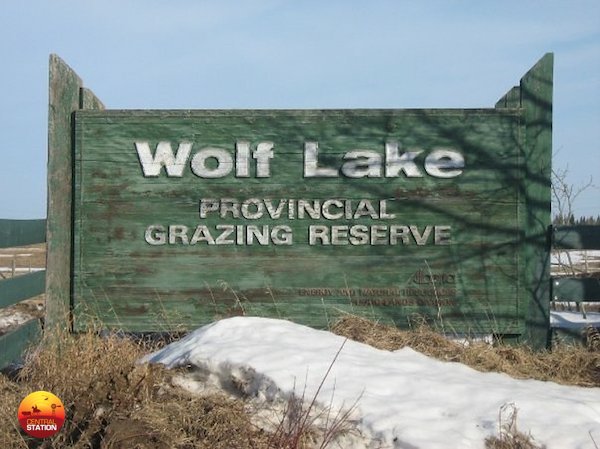 Wooden Gate way sign at pasture entrance.
Wooden Gate way sign at pasture entrance.
We are lucky enough that we have attracted two Aussies to the position all the way from Queensland, Australia. With nine seasons under their belt Andrew and Leanne Grayson are itching to get at it when their Aussie boots hit Canadian soil in early spring. With their own cattle operation, back home it does not take them long to get back into things here. Andrew usually starts the spring run before cattle arrive in late May. Checking fence lines is quite the job considering there’s 450km of them and we still have the occasional snow bank blocking the way. The best you can do is hope for a sturdy tree to winch yourself through the thawing snow. In Alberta, the further north you go the wetter the landscape becomes. We have lots of slough (bogs) that thankfully are still frozen at the bottom that need to be crossed.
So how many cattle can we run? This is the part everyone wants to know.
We have 30 patrons (cattle owners). The Board will have decided how many cattle each individual patron can graze for the year. Numbers range from 35 head to a maximum allotment of 105 head per patron.
In total, we run seven herds with the average size of 280 head per herd. Charolais and British (predominantly black Angus) are split into two herds, and there is a Simmental and Heifer herd. We also run what is called a “clean up” herd that consists of any bull and cow that are bred prior to coming to the pasture.
Bull power is based on one bull for every 35 cows. So, this year we are looking at 56 bulls. They arrive in late June and are run for 63 days. We have started pulling bulls this past few weeks. Most of the time we will walk the bulls back to the corral but if we have difficulty we will try and guide (I use the word loosely) them to the stock trailer. It’s quite the operation to watch two people coax a 800kg animal onto a trailer with the use of two horses and a few lariats. Taking your time is key and patience pays off. Patrons are responsible for picking up the bulls once delivered back to the main yards.
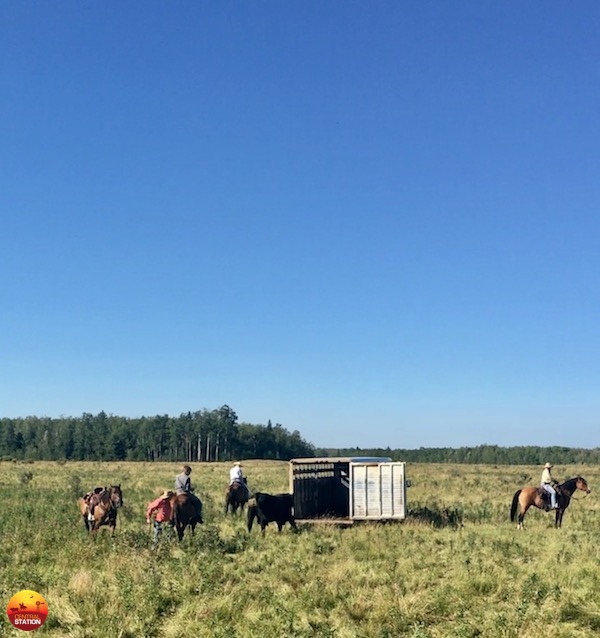 Pulling a bull from herd using stock trailer.
Pulling a bull from herd using stock trailer.
With 135 days give or take and 47 pasture blocks in use, the season flies by. Herds are ridden and checked twice a week. A loose salt mineral supplement and cobalt blocks are put out. Herds will be looked at three times a week minimum. This year we have had cooler damp nights which can be the cause of pneumonia in some smaller calves so doctoring becomes #1 on the list. We have struggled with wolves in the herds in years past and have had a few attacks already this year. With wolf attacks it’s key to catch them right away to hopefully prevent infection in the wound. If we can document any kills by wolves the patron will receive a reimbursement from Fish and Wild Life for full the value of the animal lost.
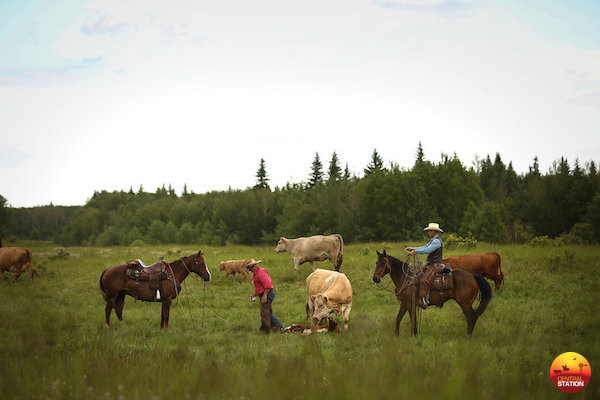 Leanne and Andrew doctoring calves.
Leanne and Andrew doctoring calves.
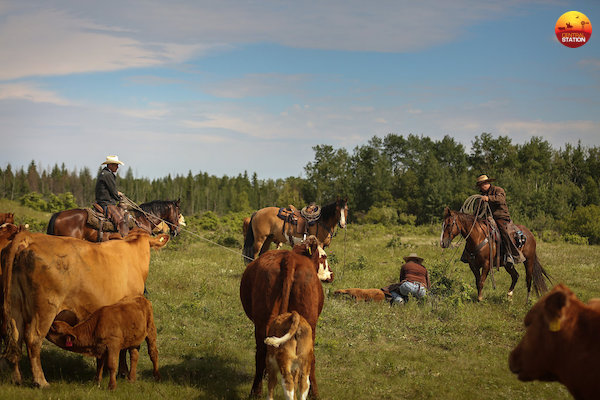 Leanne and Andrew doctoring calves.
Leanne and Andrew doctoring calves.
Although it is the same job every day there’s always entertainment. From having to walk seven miles back to the yards after bogging the truck and salt trailer, to sitting in the barn after a long day and ribbing the guy beside you for his poor efforts when roping while over a cold one.
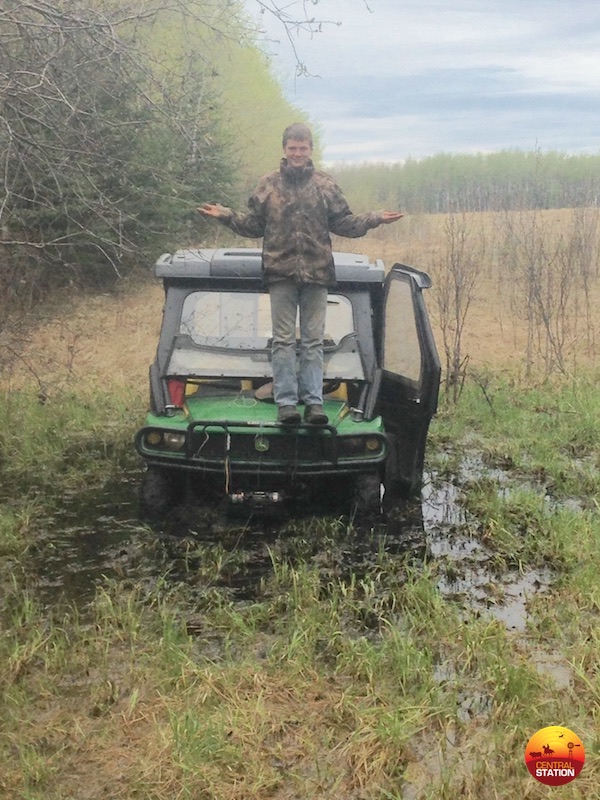 Holden, Nephew of Leanne and Andrew after getting the side by side stuck in a bog.
Holden, Nephew of Leanne and Andrew after getting the side by side stuck in a bog.
Although the pasture only requires one manager some of them attract a lot of helpers along the way. Andrew and Leanne have quite the following most weekends as they ride out to check herds. Their work never stops and that’s what everyone loves. I have had the pleasure of working alongside of them in Canada and Australia and never once did I think I was working. They truly show you that a life in the saddle is one that you will always love regardless how many calves need to be doctored or bulls pulled.
It seems about this time of year when we start to talk about “Take Out” although no one is looking forward to the colder days we are looking forward to the gathering of friends and family. Take out last nearly two weeks, from moving the herds closer to the corrals, to organizing days for patrons to come sort and haul out. Usually it’s about mid-October when we start. It’s important to get there early as a rider – saddle stands and bed space are hot commodities. The barn holds eight horses comfortably. Thank goodness there are lots of surrounding posts, as eight stalls is never enough.
Most people don’t realize the organization that goes into getting 30 different owners’ cattle out and on a trailer. I struggle most days with just keeping my donkeys and goats separated, so you can only imagine.
Each heard is brought into the hold the night before, in the early morning light they are shifted into the sort pen. Usually by 8am the sort has started. The sound of cowboys whistling, cattle bawling, and the occasional whip cracking it’s just something that stays with you. Mostly by 10am the trucks are ready to load out. The corral set up was built over 35 years ago with very few modifications along the way! It’s slick as when sorting multiple herds. Usually we have two cowboys riding the circle pulling herds to push up to the loading hold, and then two cowboys pushing into trucks. It’s quite the operation when you stand back and look. Good riders, great horses, and organization goes along way.
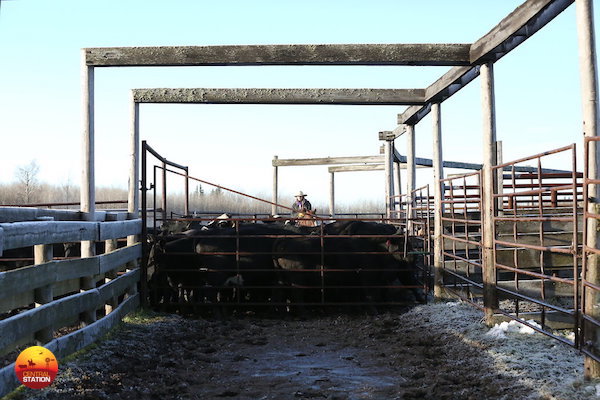 Pushing cattle from back pen to loading pens.
Pushing cattle from back pen to loading pens.
Before we know it, the corrals are empty and the season is nearly over. There’s always the few stragglers that we must go back and find but not very many as they are managed and counted when leaving every pasture.
So, I guess that is how a community is formed in a pasture. No city street lights, no community hall to gather in, just a bunch of cows, horse, and people doing what they love.
